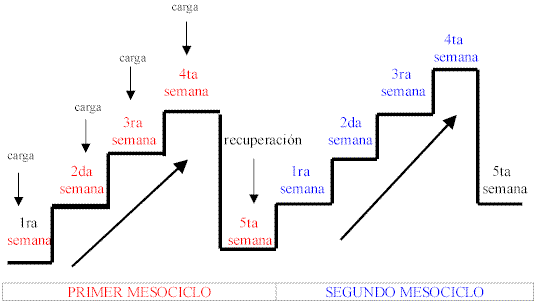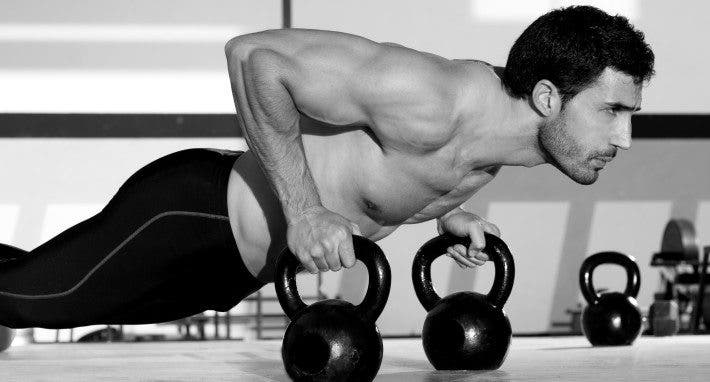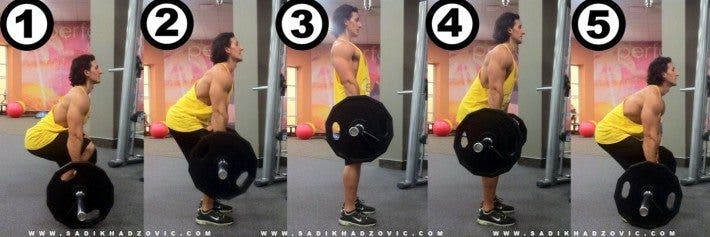Those of you who pass by will be wondering: “What are you bringing us today, Arturo? Will there be additional information along with the routine as well? Relax, I bring you everything, and I hope the additional information will be of great help to you from now on when choosing which training plan you follow and which one you do not. Attentive …
What is a training plan and what is not a training plan?
In recent weeks, different “training plans ” have “flourished” on different websites. I have always liked to learn, because that is precisely why I always listen carefully to my coach (with more than 40 years of experience in weightlifting), and I decided to go through each of them and read them carefully.
There comes a time when you wonder what went wrong . I mean it seriously, the demagoguery that appears in the world of bodybuilding is impressive and the real cause of people getting discouraged from training and leaving the gym. When you have the honor of having different people read you and follow your advice, you must be extremely careful with what you say and, if they also follow a training plan that you propose, you have to give them something more than a goal . Why? What good is a goal if the path is boring, winding, monotonous, and sometimes impossible to achieve?
I am not going to name web pages because it is not my job. My mission is that each person has a broader knowledge of what strength and bodybuilding training is, in addition to helping them achieve the body they want that, either due to lack of motivation or lack of knowledge, they are not capable of get. That when they read this training plan and see it from the outside they think: “Now I see how everything is spinning, I did not know this” and that when they finish it they say: “It was worth it.”
A training plan is not a selection of exercises
You, your neighbor, my neighbor, me and anyone is capable of doing a selection of exercises. It would be much easier to say “do this, this and this, and next month this,” but it is nonsense that gets us nowhere. If you go through a training plan that only says what exercises to do, with how many repetitions and with how many sets … it really is not a training plan.
Without active control of the volume and intensity of training there is no plan, there is simply a selection of exercises with which to hit the gym and spend an hour. There are more complex concepts that accompany a training plan, such as supercompensation . You yourself will be able to see what it is, since the 5th week of the Training Challenge is based on this principle: if in a moment you increase the intensity, then you will have to decrease it, if not, there will never be progression.
Graphically this is a supercompensation:

Simply using “complex” terms does not make it a training plan.
Some of the pearls that I have seen on the web this last week are the following:
- Calling a simple change of exercises “mesocycle change”.
- Consider a “strength mesocycle” one where you train for 12 reps.
- Use mesocycle changes without supercompensations.
- Promising sculpted bodies by always training in the same rep range.
- Use the same tempo (indicates the speed at which the exercise must be performed in each of its parts) for the concentric phase as for the negative phase.
- Same training volumes for large muscles as for small muscles.
- Etc.
There are really nice training plans, with lots of colors and awesome boards. But you have to get used to the fact that no matter how beautiful the packaging is, what matters is what is inside (a lesson for all aspects of life). What good is it to be presented very well with a selection of exercises if you actually do more sets of shoulder exercises than leg exercises?
My notes on the TrainingChallenge are papers full of studs and corrections because some parameters were out of hand. Is that bad? Much worse is staying with the initial idea . You always have to delve into that initial idea and correct the faults that there will always be, whatever the idea is for.

Always analyze before choosing . I am also going to answer the “pearls” so that it is easier for you to carry out analysis on all those training plans that you do.
- Mesocycles also include changes in workload, changes in training intensity, depending on the purpose of the mesocycle. In the Training Challenge, right now you are immersed in a “ pre-competitive strength mesocycle ”, that is, you train the basic exercises at low repetitions and add additional work to regain fitness after a long rest period.
- A strength mesocycle is one in which you train “heavy” in order to get a base to hypertrophy. It is normally considered that it is focused on strength when the number of repetitions of the basic exercises is 6 or less , however, there are other methods used in different athletes to increase their strength (the method of 100 repetitions, the method “Super- squat ”with squats at very high repetitions, etc.).
- Without supercompensations, we will only have a tired person who does not train far below his possibilities and, therefore, does not progress. This will lead you to skip workouts, end up dropping out, or injure yourself.
- To get your body 10 you have to train all aspects of physical training. By always training in the same rep range, you will end up stagnating.
- The concentric phase (when we “beat” the weight, for example, getting up in the squat) should always be as fast as the weight allows. The eccentric phase should always be controlled unless otherwise indicated. With these two notes you will achieve the maximum possible tension in the muscles.
- A small muscle should never be trained the same as a large muscle. The large one will produce the greatest progress and the greatest hormonal segregation, while the small one only needs a stimulus to grow and will not produce great changes in the physique or progress.

Routine
What you were all waiting for, without a doubt. The fourth week was practically the same as the third, however, the fifth brings great changes (although we are still in the same mesocycle). We will intensify the training on Monday (leg) and Friday (torso), that is, we will increase the intensity a lot so that our body perceives a much more powerful stimulus.
As I have already said, if we offer a much more powerful stimulus to the body, there must be a supercompensation . For this reason, the training sessions on Tuesday and Thursday will be much smoother in order that the performance can be maintained.
What does this intensification consist of?
You will remember that we are training 5 sets of 5 repetitions of the main exercises, with a load progression of 5 kg per training session. On Monday you will increase the weight used in squats and deadlifts by 10 kg in order to perform 3 repetitions with that weight. Likewise, we want to maintain the training volume so we will have to perform 10 sets with 3-minute breaks between each.
Of course, this makes it a much more demanding day so it will be necessary to perform the “CNS intensive training” as a warm-up method before starting the routine. The stimulus that your body will receive this day will be brutal.
The same will happen on Friday with the bench press, although the weight will increase “only” 7-8 kg. Likewise, always remember that you have to do warm-up series:
- Warm-up series 1: 1 × 10 with 40% of the weight to be handled that day.
- Warm-up series 2: 1 × 6 with 50% of the weight to be handled that day.
- Heating series 3-5: 1 × 3 with 70% -80% -90%.
Monday
- CNS intensive training. I recommend doing: Box jumps + Planks + Kneeling medicine ball throws from the chest (explained in the other article).
- Deep squats or deep front squats, 10 sets x 3 180 ”. With 10 kg more than last Thursday.
- Deadlift or Romanian Deadlift, 1 x 3 180 ”. The bar should start from a standing position on the floor in each repetition. With 10 kg more than last Thursday.

- Unilateral machine leg extensions, 3 x 10 60 ”. Perform with one leg, starting with the “weak” leg.
- Unilateral cufflinks in machine, 4 x 15 60 ”.
- Squats without weight, 3 x 3 30 ”. This exercise is done without weight, but we will hold the deepest position for 10 seconds. The goal of this exercise is to finish by stretching your quadriceps.
Tuesday
- Throw ball overhead, 3 x 5 60 ”.
- Military press or standing behind neck press, 5 x 5 180 ”. With 2-3 kg more than last Tuesday.
- Bench press, 1 x 5 180 ”. With 2-3 kg more than last Friday.
- Seated Barbell Bicep Curl Superset + High Pulley Extensions, 4 x 10 60 ”.
- Dumbbell + Birds Side Raise Superset, 3 x 10 60 ”.

- Pull-ups or Supine pull-ups or Pull-up concentric phase 2 hands and eccentric phase 1 hand, 3 x 8 90 ”. The last variant of pull-ups is for those who are capable of doing 20 or more pull-ups with their own weight, it consists of going up with both arms and, when letting yourself be overcome by the weight, doing it by releasing one hand. It is a brutal exercise for both arms and back.
Thursday
- Jump or Overhead Squat or Dynamic Snatch Leg, 3 x 5 60 ”.
- Deep squats or deep front squats, 5 x 5 180 ”. With 8 kg less than Monday.

- Deadlift or Romanian Deadlift, 1 x 5 180 ”. The bar should start from a standing position on the floor in each repetition. With 8 kg less than Monday.
- Trunk hyperextensions, 4 x 12 60 ”.
Friday
- Plyometric pushups, 3 x 5 60 ”.
- Bench press, 10 sets x 3 reps 180 ”. With 7-8 kg more than Tuesday.
- Seated pulley row or pulls behind the neck in high pulley, 4 x 8 90 ”’. Perform the positive phase of the movement (when you pull the weight towards you) very explosively.
- Funds in parallel, 3 x Fallo 90 ”.
- Seated Alternate Dumbbell Bicep Curl Superset + Pulley Tricep Extensions, 3 x 10 60 ”.
- Birds Superset + Side Raises + Front Raises, 3 x 10 90 ”.

downloads
Several of our followers have asked us what to do when they are not able to perform the routine with the progression of weights. It is a great question, considering that we are already breaking personal records, and that until now I had not answered. The most effective method to control the maximum weights that can be worked are the so-called downloads . In our case we will add a concept practically unknown in the world of bodybuilding, but continuously used in weightlifting and powerlifting: the shadows .
What is a download and when to download it?
Unloading consists of reducing the weight used in an exercise by 10%. They are performed when we are not able to complete two sessions in a row, all series and all repetitions with a set weight. Let’s take an example: on Monday we squatted 90 kg, but we were not able to complete the 5 repetitions in the last series. On Thursday we again did not complete the 5 repetitions and the 5 series with the same weight; then, we unload 10% of the weight for the next session (in this case, we would lose 9-10 kg).
What are the shadows?
In weightlifting and powerlifting, shadows are technical exercises with submaximal weights, that is, working below 70% of your maximum repetition. The main objective of these is to improve the lifter’s technique and their use is reserved for the day before competing or for “bad” days, days when he cannot bear the established weight.
In our case, we will apply it on those days that we cannot complete all the repetitions and series with the agreed weight. We will unload 40% of the weight and we will perform 1 series of 5 repetitions for each repetition that we cannot complete. The most important thing is to take care of the technique and perform the repetitions with great speed . Let’s see it in an example:
We squat 90 kg and our training turns out to be like this:
- Set 1: 5 reps
- Set 2: 5 reps
- Set 3: 4 reps
- Set 4: 4 reps
- Set 5: 3 reps
As you can see, we were unable to complete 4 repetitions, so we unloaded 40% (we stayed at 54 kg) and performed 4 sets of 5 repetitions.